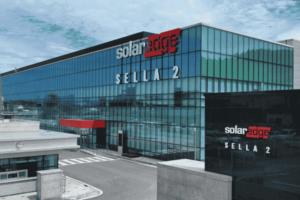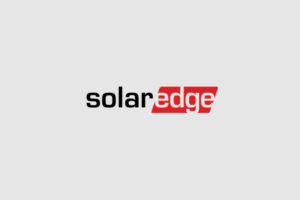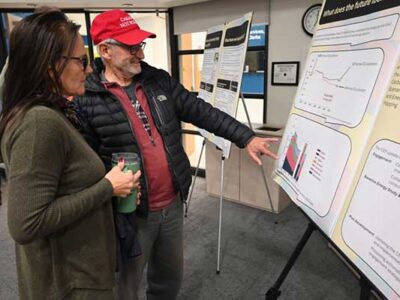The UL 3741 Standard for Photovoltaic Hazard Control was introduced in 2020 to reduce potential firefighting hazards around photovoltaic (PV) systems.
However, three years on, questions are being asked about whether the standard certification process is as robust as it needs to be. Here, Bill Brooks, Principal, Brooks Engineering, and Jason Bobruk, Director of Code Compliance, SolarEdge Technologies, both members of the UL Technical Committee which designed the Standard, and Kleber Facchini, Director of Technical Marketing, Commercial & Utility, SolarEdge Technologies, discuss how misinterpretation of the standard in some solutions may be putting firefighters at risk, and the possible implications for the PV industry.
The introduction of the UL 3741 Standard for Photovoltaic Hazard Control in 2020 was hailed as an important milestone in the solar industry’s continuing drive to improve solar system safety. Building on rapid shutdown best practice first introduced in NEC 2014, it was conceived to equip the solar industry with a broader array of rapid shutdown options in PV arrays, with the primary objective being to protect firefighters when dealing with fires in buildings with solar installations.

SolarEdge Technologies, Inc. is an Israeli company that developed a DC optimized inverter system.
In this respect, UL 3741 has achieved notable success. However, concerns are arising regarding the safety of some of the PV hazard control solutions that have entered the market since the regulation’s introduction.
Beyond compliance: The need for holistic safety approaches in PV installations
Prior to the introduction of UL 3741, the solar industry relied on MLPE (Module Level Power Electronics) technologies, including DC-optimization, to provide rapid shutdown. DC-optimized systems allow for two panels to be connected in series, meaning that, upon rapid shutdown initiation, the maximum voltage within the array is 125VDC. As a result, these systems fall within Hazard Level 1, or lower, inside the array boundary, eliminating the need for additional protective measures to comply with UL 3741.
UL 3741 opened the door to allow solutions that use few if any MLPE devices, including DC-optimization, to be code compliant. In these solutions, AC conductors are de-energized using traditional string inverters. However, the DC array itself maintains high voltage levels (1000VDC) even after a rapid shutdown is initiated, corresponding to Hazard Level 3.
To mitigate this increased risk, UL 3741 states that solar arrays need to be made safe and not allow any exposure to dangerous voltages during firefighter interaction. This means that every wire, module, or energized component in the array that can be accessed during firefighter operations must be protected from damage using robust wire protection
measures i.e., sturdy guards and conduits, etc. Furthermore, regular inspections are required to ensure that all protective elements and wire management components must provide this level of protection throughout the project lifespan. In other words, whatever means of protection that is used in the beginning of the project will need to be maintained for up to 25 years.
It is at this point that some of these alternative solutions start to lose traction. This is not due to any flaws in the UL 3741 standard itself, but rather it is because of the way it is being interpreted by some manufacturers and certification agencies.
The biggest concern is non-DC-optimized systems without integrated rapid shutdown in which exposed, accessible live wires with voltage levels up to 1000VDC are held in place by nothing more substantial than plastic cable ties or plastic raceways. These solutions are not compliant with UL 3741, but they have somehow slipped through the certification process.
From day one, those exposed live wires may pose a significant risk to fire fighters. And that risk will only increase as aging and normal weathering, including sun exposure and wind, potentially cause the plastic ties and raceways to deteriorate. Once this happens, more sections of conductors may become exposed, accelerating the shock hazard risk to firefighters. Furthermore, the likelihood of arc-faults and ground faults developing into fires is increased as the array will be maintained at 1000VDC even during array or inverter faults.
This does not just put firefighters at risk. Operations & maintenance (O&M) and asset managers should be concerned that with some non-DC-optimized solutions, field crews will have to work around 1000VDC instead of Hazard Level 1 voltage levels. The hazards of an accidental short or broken module can be exacerbated by the 1000VDC voltage level present in the array.
Assessing the true cost of compliance
There are several reasons why companies might choose to rely on a non-DC-optimized system without integrated rapid shutdown to perform this crucial function. The first is that in most cases they may not adequately consider the wear and tear of the components over the years. As the system ages, array faults are more likely, and inadequate mechanical barriers will become even more of a hazard.
Cost is another consideration. From a project economics standpoint, opting for a non-optimized solution might initially seem to make sense. However, upon further analysis this is not the case when metrics like Return on Investment (ROI) and Net Present Value (NPV) are considered.
To comply with UL 3741, non-DC-optimized systems require additional measures such as costly advanced mechanical protection, PV Rapid Shutdown Equipment (PVRSEs) for array
subsections, and longer AC cable runs to position the inverter within one foot of the array. These additional costs quickly accumulate, significantly increasing upfront system costs.

SolarEdge Technologies Inc. is a provider of power optimizer, solar inverter and monitoring products for photovoltaic arrays. These products aim to increase energy output through module-level Maximum Power Point Tracking.
Operational expenses (OPEX) also need to be factored in. For example, maintenance costs are typically higher for a non-DC-optimized system. DC optimization provides continuous and granular data which enables real-time monitoring of any potential issue at the DC array. In non-optimized solutions that do not have this capability, a site visit may be required to investigate any issues. Additionally, due to the complexity and inherent risks involved in maintaining non-optimized solutions, more experienced technicians are often required, resulting in higher labor costs.
Organizations also need to seriously consider how their choice of solution will impact energy production. DC-optimized solutions provide the design flexibility required to accommodate rooftop equipment and obstructions and mitigate shading effects on the array. This increases the number of viable locations for module placement, and therefore system size, substantially increasing energy production and improving system ROI.
Another consideration should be that in order for non-DC-optimized solutions to meet the requirements of UL 3741, the inverter must be located no more than one foot away from the array to limit exposure to dangerous energized DC conductors. This restricts inverter placement, increases voltage drop losses, and can make it challenging to avoid shading throughout the day, leading to further production losses.
Building a safer solar future
In conclusion, the solar industry has seen great progress in rooftop installations for safety, economics, and O&M aspects. However, if they are not applied correctly, some non-DC-optimized UL 3741 solutions threaten to diminish this progress. Unless steps are taken to address the issues outlined here – either driven by the industry itself or mandated by future amendments to codes – the fire service may question the use of these standards. This could adversely impact the PV industry and shine a negative light on genuinely compliant systems.
Additionally, designers, developers, EPCs and asset owners must consider that initial cost savings from non-optimized systems can be outweighed by the added expense of ensuring safety and maintaining the system over time. In other words, a thorough understanding of the risks and limitations of these solutions is essential before implementing them in projects.
DC-optimized systems allow for two panels to be connected in series, meaning that, upon rapid shutdown initiation, the maximum voltage within the array is 125VDC
The initial cost savings from non-optimized systems can be outweighed by the added expense of ensuring safety and maintaining the system over time















Comments